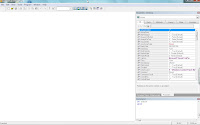Lifetime Achievement

Wow... that is all that I could really say, wow!
On Wednesday October 26, 2011, while I was waiting to hear what I knew would be a fantastic Keynote presentation from Steven Black at Southwest Fox 2011 in Phoenix, AZ, I was awarded the biggest honor in the FoxPro Community. I was awarded the FoxPro Community Lifetime Achievement Award. Not only that... I was awarded this at the same time as our Keynote speaker. To say the least I was surprised, excited, humbled and thankful.
A little background for those reading who may not be part of the FoxPro Community... FoxPro is a programming language and database engine. I have been programming in this language and using this database since.... well for a long time. :-) This programming language has a following, "the community" and in my opinion the BEST COMMUNITY of any. The community is made up of the people who, like me, use the language but it is so much more. These people really care about the others in the community. We help each other with technical issues, life issues, job issues... you name it. It is a group that shares and cares! Every year, since 2001, the Lifetime Achievement is awarded to one or more individuals that have made outstanding contributions to the community. This year I was one.
It was only fitting that my award was presented by Rick Schummer. Rick is a local (Detroit is local to Toledo, right?) FoxPro Community Member and a very good friend of mine. I am at a loss for words to describe Rick because he really is awesome. He gives so much to his family, the FoxPro community and manages to save some for himself too. I am not sure how he does it, but I think with no sleep. :-) Rick and I go back a long time and I was flattered to have him present me with my award.
When I went up to receive my award, I looked in the back of the audience and lo and behold there was my wonderful husband Mike and my brother-in-law Phil. My first thoughts... "Where are my kids? They are supposed to be home with Mike." Once past that I was so excited. You see... I would not have been standing up there had it not been for Mike and Phil. I was so glad to share this moment with them.
There are no speeches when you receive this award which is a good thing as I was not prepared. Now that it has settled in I can offer some thanks. This is not an exhaustive list by any means. There are far too many people who have had an impact on my life to mention here.
Thank you FIRST and FOREMOST to the FoxPro Community for finding me deserving of this award. This really is the best community to be involved in. There is not another group of people as awesome as we are!
Thank you God for giving me the talents that allow me to help others and accept the help that they give me.
Thank you Mike and Phil for giving me the opportunity to learn, grow and improve my skills and by sometimes (ok... a lot of times) pushing beyond what I "could" do.
Thank you to my family (extended pretty far) for understanding my emotional need to do "freebies" like technical support, presentations, articles, books, free software. Yes, I got paid for some of this but the payment does not cover the time and energy it takes to actually do the work. The personal reward is the payment!
Thank you YAG for taking me under your wing at PC Expo in 1990. You were my first face-to-face contact with the FoxPro Community and really started to show me what it was all about. I am so greatful that you and Randy Brown were there to see me receive this award.
Finally... Thank you to Janet Hurt wherever you are. I went way outside of my comfort zone as a recent college graduate when I called you and asked you if I could still have that interview that I had previously declined. Had you not allowed me that second chance, I would not have worked at Fox Software and would probably be writing COBOL code in some company basement today.





